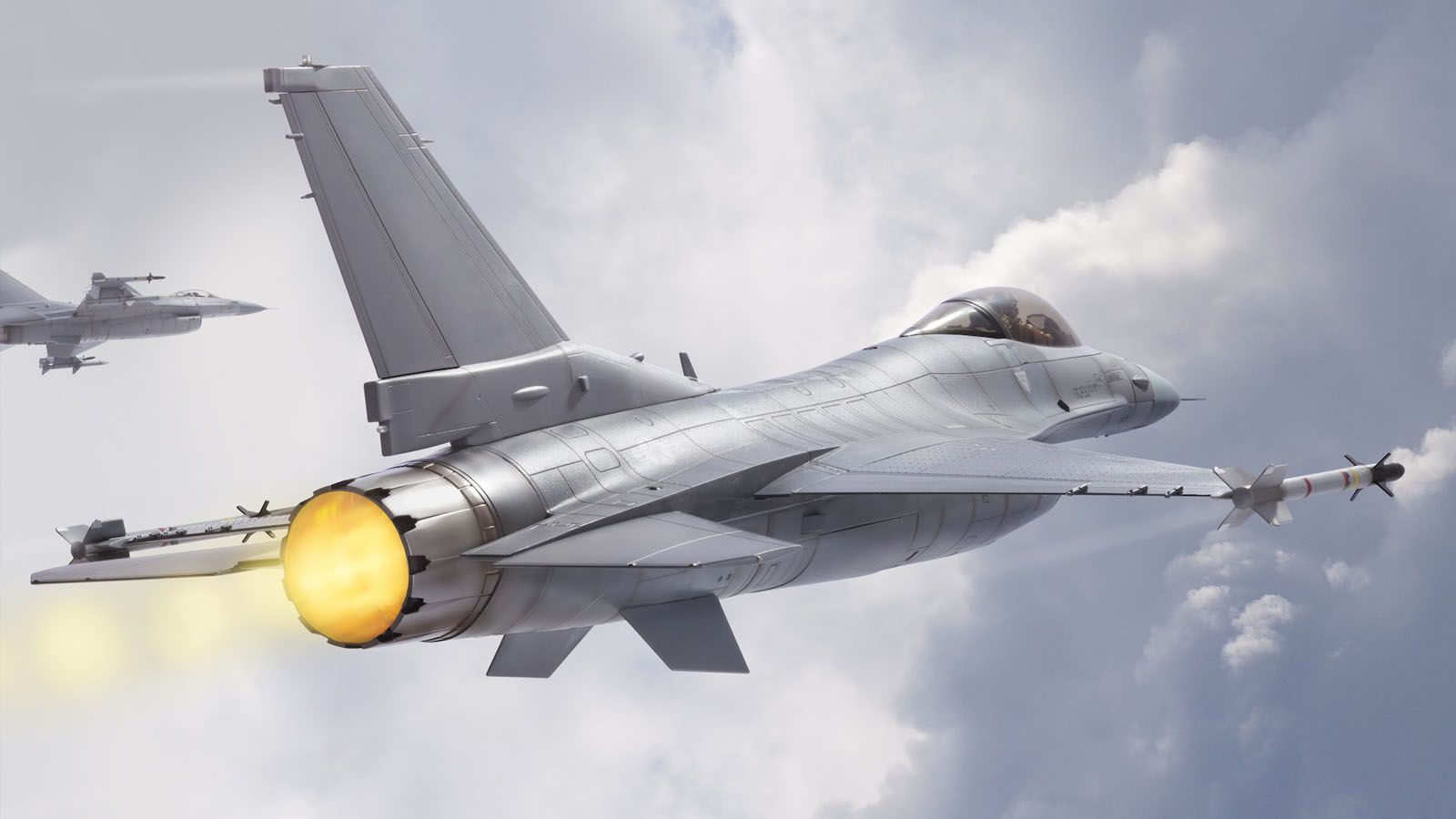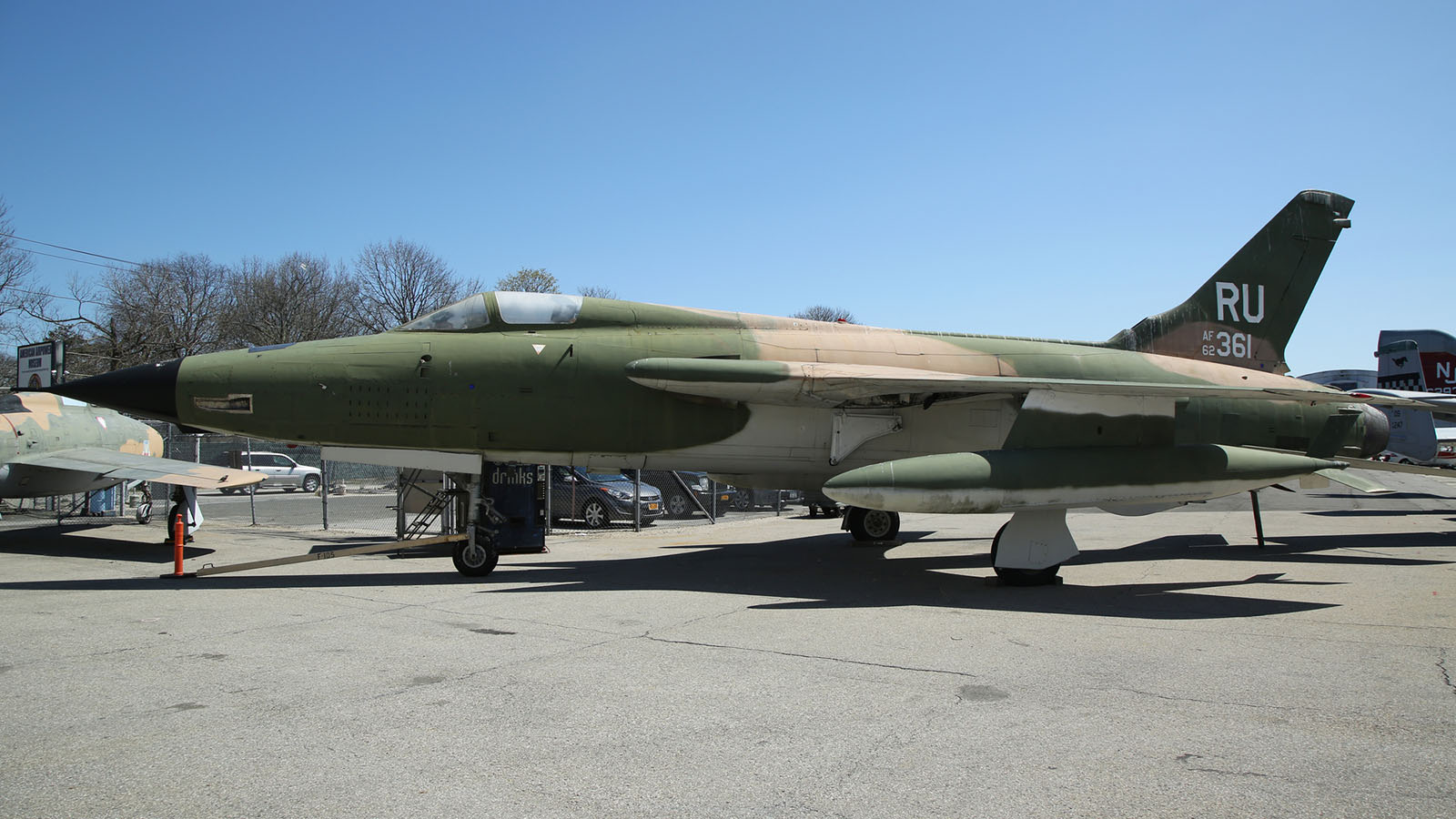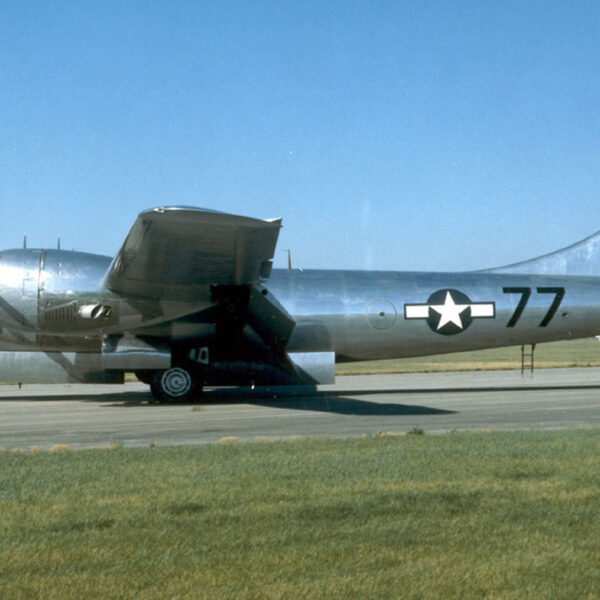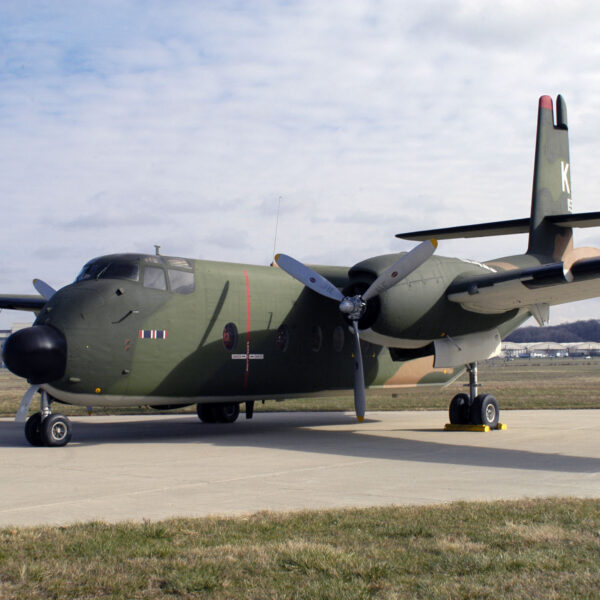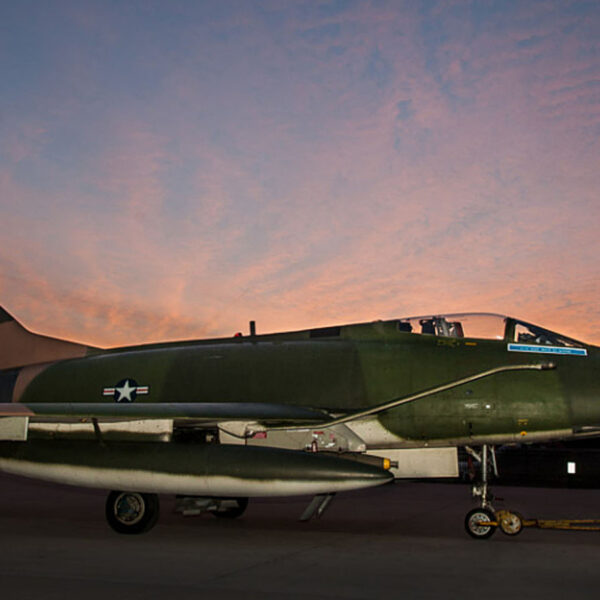F-4 Phantom
The F-4 Phantom is pivotal in aviation history. This twin-engine, supersonic jet was integral to numerous military operations, notably the Vietnam War. Its innovative design and technical prowess made it a formidable force in the sky.

The Historical Significance of the F-4 Phantom
The F-4 Phantom, a versatile and reliable aircraft, was a cornerstone of the United States Air Force (USAF) and Navy during the Cold War. Its adaptability enabled its use in various roles, such as air superiority, ground attack, and reconnaissance.
The Phantom’s historical significance is tied mainly to its extensive service during the Vietnam War. Despite initial setbacks due to the lack of an onboard cannon, its superior speed and payload capacity made it a formidable opponent in air-to-air combat.
Furthermore, the F-4 Phantom was the last U.S. fighter flown by pilots who attained ace status in the 20th century. This and its service in subsequent conflicts, such as the Persian Gulf War, cements its place in military aviation history.
Technical Specifications and Design Features of the F-4 Phantom

In 1965 the USAF sent its first F-4Cs to Southeast Asia, where they flew air-to-air missions against North Vietnamese fighters and attacking ground targets. Col. Robin Olds, a World War II ace, was the first USAF pilot to score four combat victories with F-4s in Southeast Asia. The aircraft on display is the one in which Col. Olds, the pilot, and Lt. Stephen Croker, the weapons system officer, destroyed two MiG-17s in a single day, May 20, 1967. (U.S. Air Force photo by Ty Greenlees)
The aircraft’s design has a carry load of up to 18,650 pounds of weapons, including air-to-air and air-to-ground missiles and a 20mm M61A1 Vulcan Gatling gun. It was also equipped with an inflight-refueling system, which extended its operational range significantly.
The F-4 Phantom’s robust and versatile design made it adaptable to various roles and operational requirements. While initially designed as an interceptor, it was later used effectively in ground attack and reconnaissance roles. The F-4’s superior speed, exceptional radar systems, impressive payload capacity, and adaptability underscored its importance in military aviation history.
.
The F-4 Phantom’s Role in the Vietnam War
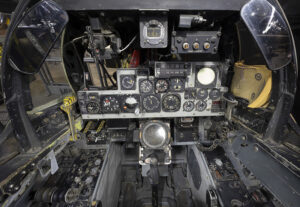
The F-4’s adaptability was showcased in both air-to-air and air-to-ground operations. With its speed and maneuverability, it was often deployed in air superiority missions to counter North Vietnamese MiG fighters. Furthermore, its capacity to carry diverse ordnance allowed it to effectively engage enemy ground forces and infrastructure in strike missions.
Despite the Phantom’s technical prowess, the aircraft faced challenges. Its initial lack of a gun proved disadvantageous in close combat situations. However, introducing the F-4E model, equipped with an internal M61 Vulcan cannon, helped overcome this shortcoming.
The F-4 Phantom’s performance in the Vietnam War solidified its reputation as a reliable, multi-role combat aircraft. It remains a significant symbol of American military aviation history.
Modern Usage and Legacy of the F-4 Phantom
Several nations around the globe continue to utilize the F-4 Phantom in their air forces, underscoring the enduring legacy and modern relevance of this iconic aircraft. Despite its age, the F-4 Phantom remains a formidable force in the air. It has proven its versatility and resilience in various roles, including air superiority, ground attack, and reconnaissance missions.
The F-4 Phantom’s modern usage extends beyond combat roles. It also plays a significant part in training missions, providing pilots with a platform to develop and hone their skills. In recognition of its contributions, the Phantom has received numerous upgrades over the years, ensuring its relevance in an increasingly technologically advanced landscape.
The legacy of the F-4 Phantom is evident in its continued service worldwide. It is a testament to its design and capabilities that this aircraft, which first took to the skies in the 1960s, remains in active service. Indeed, the F-4 Phantom stands as a symbol of aviation history, its enduring presence serving as a reminder of its significant role in shaping the face of modern air warfare.
Notable F-4 Phantom Variants and Their Unique Characteristics
The F-4B, the first production model, was introduced in the 1960s and featured enhanced radar and missile systems, setting the benchmark for future models.
The F-4C, a US Air Force version, was equipped with a ground-attack capability, enhancing its versatility. The F-4D, another Aerial Force variant, featured improved radar and air-to-air missile systems.
The F-4E, a significant upgrade, boasted an internal M61 Vulcan cannon, extended nose, and leading-edge slats to improve maneuverability. The F-4E was the most produced variant, demonstrating its operational value.
The F-4G, the “Wild Weasel V,” was designed for SEAD (Suppression of Enemy Air Defenses) missions, with advanced radar detection and anti-radiation missiles.
The RF-4, a reconnaissance variant, was equipped with cameras and sensors, contributing to intelligence-gathering efforts.
These variants played a critical role in enhancing the F-4 Phantom’s operational capabilities. The continuous improvements and adaptations ensured the F-4 Phantom remained a formidable force in the skies for many decades.
Frequently Asked Questions
What Was the Cost of Manufacturing an F-4 Phantom Jet?
The manufacturing cost of this particular jet model varied depending on the year and specific model. However, reports suggest it ranged between $2.4 million to $18.4 million during its production years.
Who Were Some Notable Pilots of the F-4 Phantom?
Notable individuals who mastered flying this high-speed jet include Colonel Robin Olds, a triple ace, and Steve Ritchie, the only Air Force pilot ace during the Vietnam War.
How Does the F-4 Phantom Compare to Other Fighter Jets of Its Time?
When comparing this jet to its contemporaries regarding speed and maneuverability, it was highly competitive. Despite its size, it boasted impressive speed capabilities and demonstrated exceptional maneuverability in various flight conditions.
What Were the Primary Challenges During the Design and Development of the F-4 Phantom?
The primary challenges during design and development included achieving high performance without compromising stability, incorporating advanced avionics, and integrating powerful engines to ensure speed and maneuverability in various combat scenarios.
Are Any Museums or Exhibitions Where One Can See an F-4 Phantom on Display?
There are numerous institutions globally that showcase this remarkable piece of engineering. Notably, the Smithsonian National Air and Space Museum and the Imperial War Museum Duxford have such exhibits for public viewing.
Conclusion
In conclusion, the F-4 Phantom is a monumental testament to aviation engineering and military strategy prowess. Its unparalleled performance and versatility in combat situations and its enduring legacy in modern warfare have solidified its place in the annals of aviation history. The F-4 Phantom is not just an aircraft; it’s a monument to human ingenuity, forever soaring in the limitless skies of our collective memory.


